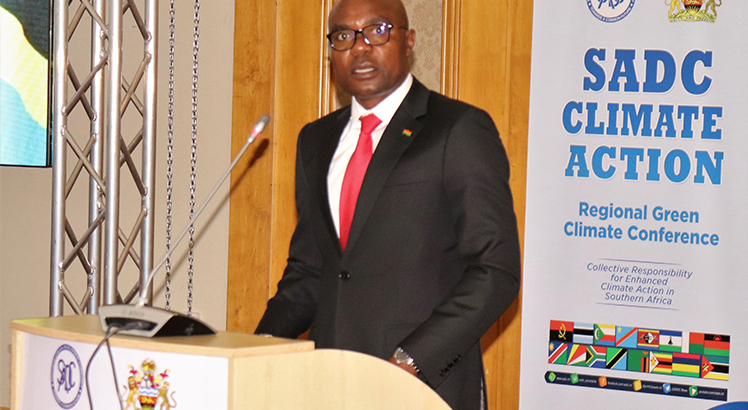Need for pragmatic strategies on climate change (Part II)
Last week, we started looking at issues concerning climate change, which is currently synonymously called ‘global warming’ since the current change has seen a rise in global temperatures, reportedly with 2°C.
In the previous edition I gave a glimpse of some of the general known causes of global warming—biological processes, variations in solar radiation received by the earth, plate tectonics, volcanic eruptions and most importantly human activities.
If you look at these causes clearly, you will notice that they can be divided into two—natural and artificial causes. And the only artificial cause is ‘human activity’. Human activities which contribute to global warming are also known as anthropogenic causes.
Now it can be seen why almost the whole world had to spend resources meeting in France, recently, to discuss measures to curb anthropogenic causes of global warming. First and foremost, they are preventable and, secondly, and most importantly, they are the most common cause of the current global warming.
I am saying the current global warming because there is a group of scientists which argue that this global warming is not the first in the history of the earth and funny enough this group of scientists further argues that global warming is natural and cyclic. Anyway, I just wanted to give a synopsis of why I said next time we will finally look at how pragmatic these strategies are in curbing global warming, bearing in mind that there are these so-called mercenary scientists and economists.
Anyway, looking at anthropogenic causes of global warming, the principle cause involves emission of gases into the atmosphere, which leads to rise in global temperatures. Some of the notable global warming gases are carbon dioxide, water vapour, nitrous oxide and methane. These gases are also known as green house gases.
These gases usually absorb radiation energy from the sun and emit it to the environment as heat thereby increasing the surrounding temperatures. This process is normal as these are the same gases that make our surrounding reach the room temperatures. If they were not there then the earth would be frozen cold.
However, an increase in these gases beyond naturally expected levels, leads to increased temperatures beyond expected normal temperatures, because there are too many molecules absorbing radiation and emitting it as heat.
The following are how some activities help in emitting these gases and cause global warming: burning fossil fuels; burning of fossil fuels (oils and gas) for energy, for example, for electricity and transport, is said to contribute most green house gases:
Deforestation; all plants take in carbon dioxide from the air and release oxygen thereby removing excess carbon dioxide, which is why they are sometimes referred to as carbon “sinks”. When land is cleared and trees or vegetation removed or burnt, the stored carbon is converted back into carbon dioxide:
Farming: Animals particularly sheep and cattle produce large amounts of methane and some fertilisers also release nitrous oxide:
Waste break down; Carbon dioxide and methane are released during the decay of food, vegetation and paper dumped in landfills. The same thing occurs when sewage wastes break down:
Industries; Many industrial processes, such as cement production, liquid natural gas production and coal mining, produce or emit a variety of greenhouse gases.
Looking at the above most common causes of global warming, one would think of current exponential increase in these activities in the world. For example, just consider the number of new vehicles entering Malawi, and compare that with some 20 years ago. How many forests have been brought to its knees and worse still replaced by farms. Increase in industries? n





